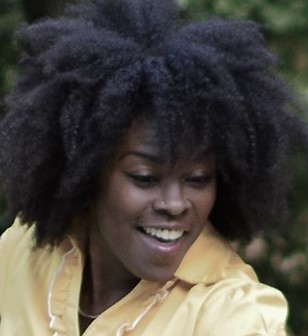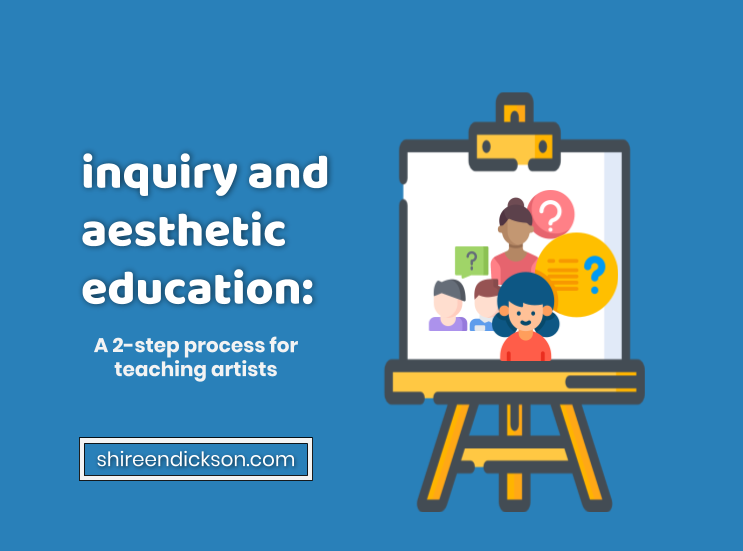An easy two-step process to using focused inquiry and reflective observation to help your group find deeper meaning in arts works they see/experience.
Aesthetic Education Lite
As I’ve interpreted from readings and many discussions with teaching artists involved with Lincoln Center Education (well, they were involved in what it was called before), the aesthetic education process involves direct, mindful engagement with live art using inquiry, research, engagement and reflection as the cornerstones of arts exploration.
LCE’s work is supported by the theories of Maxine Greene, a philosopher and educator who maintained that the full potential of any kind of art form is “realized through a continual transaction between the experiencer and the stimulus.” So LCE’s methodology facilitates that.
What Works
The most useful elements of aesthetic education to me are how questioning can be used to strengthen individual connection to the arts work. In the most general terms, observation directs the inquiry piece. We simply talk about what we see.
A student doesn’t need fancy language to say “the man was wearing black pants” or “the man kept spinning in circles.” This sets a simple and strong foundation to go deeper, faster, in discussions.
What Doesn’t
Important for me to say that I have had) many issues with the way the theory is interpreted and implemented by LCE with young people, but that does not override how aesthetic education principles help me dissect my work.
Describing art – democratically
Two students can watch a dancer spin in continuous circles. One may wonder “is she getting dizzy?” while the other might think about mandalas (and each student would then follow their own course of research to answer the questions raised).
Or a step further: it’s the difference between “I like this dancer because he kicked his legs really high and did four turns on one foot without stopping” vs. “I like this dancer because she has red hair like my aunt” and having both answers be valid within a context of differentiated thinkers.
There can be many “right” answers
There was a time in this country, in some areas in some schools, when a high school history teacher could spout some archaic opinion like “the slaves were happy to leave backwards-ass Africa ‘cos in ‘Merica they had one hot and a cot” and even if you thoughtfully disagreed with citations on your term paper you failed. There was only one right.
This questioning model can neutralize any contextual charge around content — whether a film, photograph, comic strip, dance, etc. It allows you to wonder about the infinite possibilities and interpretations, validate your rightness, and also, and most importantly, accept others’ “rightness” alongside, and not combative, to your own.
Two-Step Inquiry Process Explained
1. Rely on your eyes (and ears).
Ask participants to describe EXACTLY what they see or hear, as “objectively” as possible. I find a lightning round where every participant gives a short response without repeating what someone else said works most efficiently.
Here’s an example:
|
Example |
Random Participant Responses |
Not Objective |
||
|---|---|---|---|---|
|
Discipline |
Warm-up |
Main Activity |
Group/ Closing |
|
|
DANCE: TANGO |
two people dancing together |
the woman wrapped her leg around the man |
the dancers touched most of the time |
the dancers don’t like each other |
|
VISUAL ARTS: MONA LISA |
woman has parted black hair |
there’s a road behind her |
the sky has different shades of blue |
the woman has a secret |
|
MUSIC DJEMBE DRUMMING |
the drummers’ hands moved fast |
there were four drummers |
sometimes they played loud |
I want to dance |
Visual Arts: Mona Lisa
Sample objective responses:
- I see a woman
- She has black hair that’s parted
- There’s a road behind her
- The sky has different shades of blue
But not:
The woman has a secret
Music – Djembe drumming
Sample objective responses:
- I hear drums
- The tempo is fast
- Some sounds were louder than others
- The drummer used her many parts of her hands
But not:
I want to dance
Dance – Tango
Sample objective responses:
- There are two dancers
- The dancers touched most of the time
- The woman did a spin
But not:
The dancers don’t like each other
2. Connect observation to opinion
Once brains begin to work and recall details, participants are primed to create personal connections to the work.
Now we want to connect the objective observations to memory, culture and community. Ask one open, guided question (again, that everyone will answer) that focuses on whatever your main lesson objective is and let the creativity fly.
Here are examples of questions I use:
- Who in your family needs to see/know about this?
- One word to describe how this feels (emotionally, physically)
- What’s the sequel? What is the “part two” to this artwork/experience?
- What part would you “play” in the creation or (re)presentation of the artwork?
For people who already know this stuff
You probably recognize the hybrid of models in here including elements of inquiry-based education and Liz Lerman’s critical response method. Again for me, this thought line was inspired by LCE’s approach as I was experiencing it in professional development or in discussions with colleagues.
When to use the inquiry approach
Anytime you need your participants to quickly synthesize what they are seeing, doing or experiencing but in particular:
- You are describing, creating or demonstrating cornerstone class content
- You are analyzing content – either live or on video
- Participants are giving peer feedback
The Benefits of This Approach
This quick process creates a shared group experience that negates conflict because it democratizes your discussion. It continually reinforces what participants saw from multiple angles. Everyone contributes something. It’s so simple it doesn’t really need modeling. There are no wrong answers.
Your group is gently coerced into focus on detail, which keeps them mindful to the arts work and to the shared group experience.
[Sassy_Social_Share align=”center” title=”Share and/or follow, if you please!”]
I’m excited about what you’re writing
I truly do want to hear from you! I appreciate any opportunity to pontificate on these subjects. Or, if I can help in any way, let me know.
Your nameEmail AddressMessageSend message

No responses yet